16 pictures which show the devastating impact of plastic on animals and the oceans
Greenpeace estimates that 12.7 million tonnes of plastic waste makes its way into the oceans every year.
Last month, shocking images emerged of 'sea' of rubbish stretching for miles in all directions off the coast of Roatan, an idyllic Honduran island in the Caribbean. Among the debris were crisp packets, zip bags, product packaging, plastic forks, plastic spoons, drink bottles, plates, toothbrushes and even TVs. But these pictures revealed just the tip of the plastic iceberg.
The production of plastic has skyrocketed to extraordinary levels in recent decades, to the point where humans are now producing around 300 million tons of the stuff every year, according to Plastic Oceans. Between 2002 and 2012 humans have produced more plastic than during the whole of the 20th century, according to Earth Day Network.
With a growing global population, this trend is only going to accelerate, and because the material does not biodegrade easily, every molecule of this plastic still exists somewhere in the environment.
With its limitless applications, plastic has become ubiquitous in our everyday lives. However, there is a huge environmental cost associated with its use. Around half of all the plastic that is produced is designed for a single use, meaning huge quantities are being thrown away every day.
Greenpeace estimates that 12.7 million tonnes of this plastic waste – including bags, bottles, and packaging – eventually makes its way into the oceans every year, with devastating consequences for animals and the marine environment. In total, studies suggest there may be between 15 and 51 trillion pieces of plastic in the world's oceans, while many rivers and estuaries are also heavily polluted.
Pieces of plastic can choke or entangle marine animals, and can also be eaten, clogging the stomachs and digestive systems of creatures who mistake it for food. Hundreds of thousands of seabirds, turtles, and other animals suffer grisly deaths as a result of plastic waste every year, according to the United Nations Environment Programme.
Due to its low density, plastic waste can hitch a ride on ocean currents, allowing it to spread all over the world - from Pacific islands, to UK beaches, and even the Arctic circle. The debris is often concentrated in the Earth's major ocean gyres – which are huge systems of rotating ocean currents.
One of the five main subtropical gyres is now so heavily polluted it has been named the Great Pacific Garbage Patch – a vast region of plastic debris located between Hawaii and California. Some estimates suggest it could be twice as big as France, or perhaps even larger. However, its size is incredibly difficult to measure, partly because it is mostly made up of tiny plastic particles known as microplastics.
These particles, which are defined by the US National Oceanic & Atmospheric Administration as being smaller than 5mm, come from two main sources. Manufacturing is one of the main culprits, especially the production of nurdles – small pellets of raw plastic resin which form the basis of nearly all the plastic items in our lives. More than 100 billion kilograms of nurdles are transported around the world every year, with many escaping into the oceans.
The other major source of microplastics are small fragments which derive from larger pieces of debris. While plastics do not biodegrade easily, they do break down when exposed to sunlight or physical friction, fragmenting into progressively smaller pieces.
Microplastics are almost undetectable but they may now be the most common type of plastic debris, affecting every ocean and in the world and many coastlines. On Kamilo Beach in Hawaii - dubbed 'Plastic Beach' due to its abundance of litter - there are more plastic particles than grains of sand on the surface, while nurdles have been detected on 73% of UK beaches. The problem is only set to worsen as larger pieces break down, increasing the quantity of microplastics.
While these microplastics are not necessarily poisonous themselves, they can attract and accumulate toxic pollutants which are already in the water, such as DDT and PCBs. The microplastics are often consumed by small marine creatures like plankton and mussels, which are subsequently eaten by progressively larger animals. Currently, scientists don't know much about this process, but there is worry that toxic chemicals could be accumulating as they make their way up the food chain, causing harm to animals and perhaps even humans who eat polluted seafood.
If all that wasn't bad enough, plastic waste can even enable the transport of invasive species around the world, posing a threat to biodiversity and the integrity of ecosystems. Following the powerful tsunami in 2011 that devastated Japan, an unprecedented migration of animals occurred through which nearly 300 species of marine animals hitched a ride on plastic cast into the ocean by the destructive wave, appearing years later on Hawaii and the West Coast of America.
If environmental concerns aren't enough to stir people into action, then perhaps the commercial ramifications will. Plastic pollution costs the global economy millions every year when factoring in the cost of beach clean ups, tourism losses and damages to fishing and aquaculture industries.

This albatross was found dead on Midway Atoll with plastic and other debris in its stomach. According to the Center for Biological Diversity, hundreds of thousands of seabirds ingest plastic every year, with many ultimately starving because the storage volume of the stomach is reduced. Research suggests that around 60% of all seabirds have eaten pieces of plastic at some point, with that number expected to increase to 99% by 2050. Some species such as the Atlantic puffin, the greater shearwater and Laysan albsatross are already heavily affected.
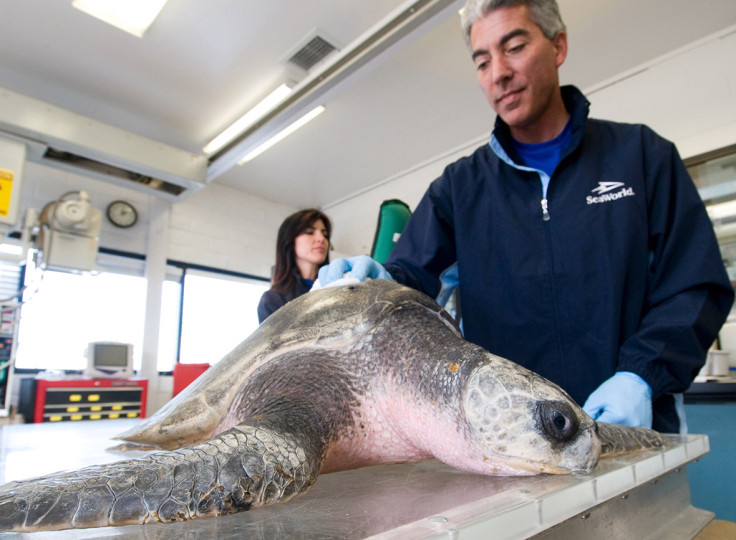
This turtle was found beached on the Camp Pendleton Marine Corps base north of San Diego, dehydrated, underweight and hypothermic. It was also found to have ingested plastic. Sea turtles often mistake floating pieces of rubbish for food. This can lead to blockages in the gut, ulceration, internal perforation and death. Aside from direct injuries, the animals may suffer false sensations of being full, or they may stop reproducing. Research indicates that roughly half of sea turtles around the world have ingested plastic.
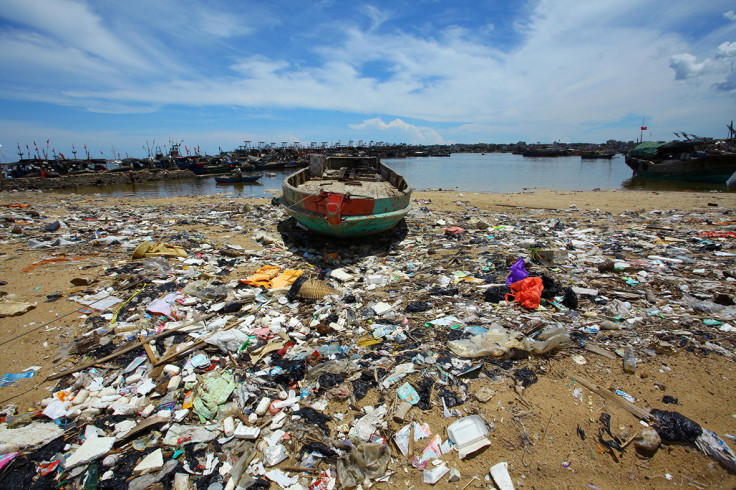
Rubbish strewn along a beach in Anquan village, Hainan province, southern China.
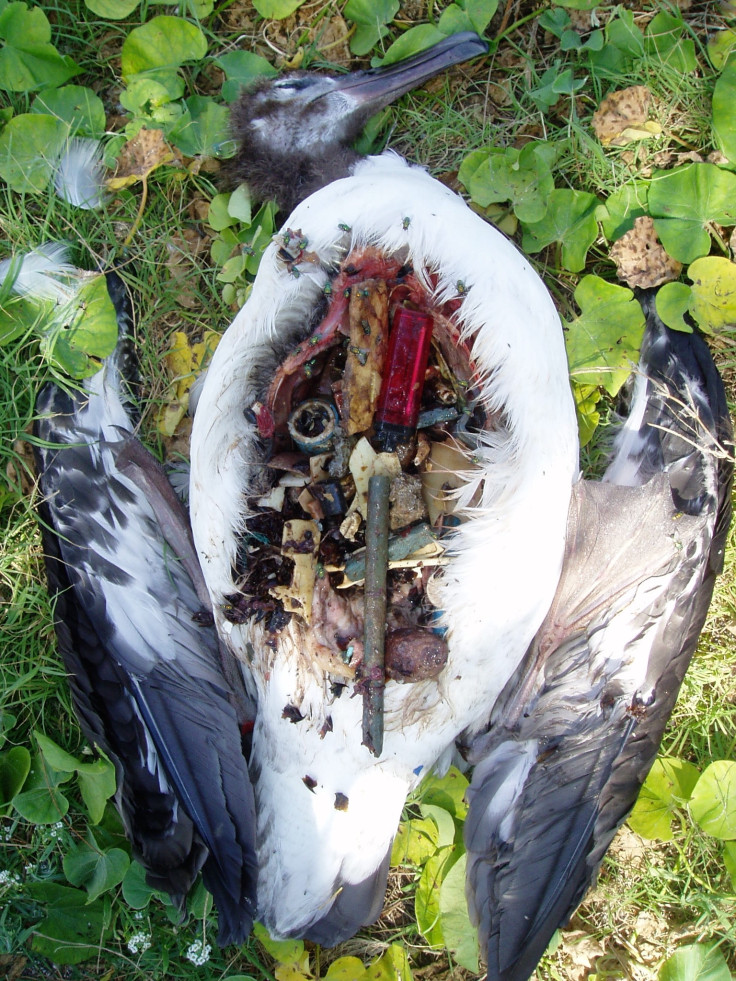
97% of all Laysan albatross chicks - which are native to the North Pacific - have pieces of plastic in their stomach, research suggests. The plastic is fed to the chicks by their parents who mistake it for food.
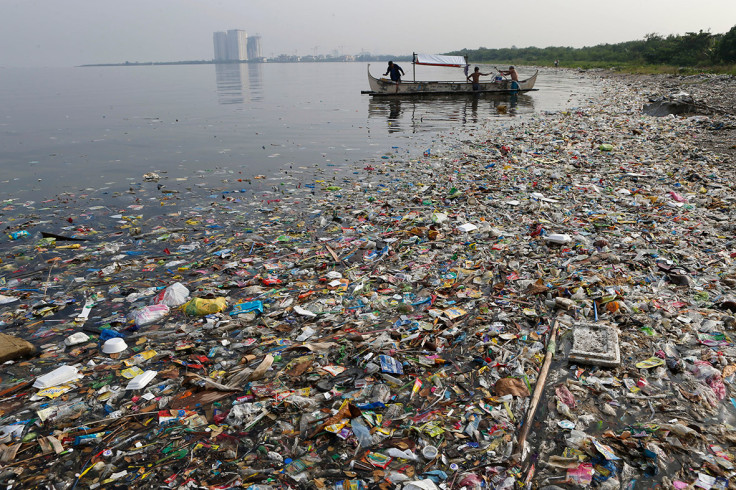
Fishermen prepare to fish amid floating rubbish off the shore of Manila Bay, the Philippines.

This goose-beaked whale was found beached on the Norwegian coast and was in such poor health that marine biologists took the decision to euthanize it.

The carcass was taken to Denmark for examination where the researchers found at least 30 plastic bags in its stomach. In England, before the 5p plastic bag charge was introduced, 8.5 billion plastic bags were used in supermarkets every year, each with an average useful lifespan of around 12 minutes.
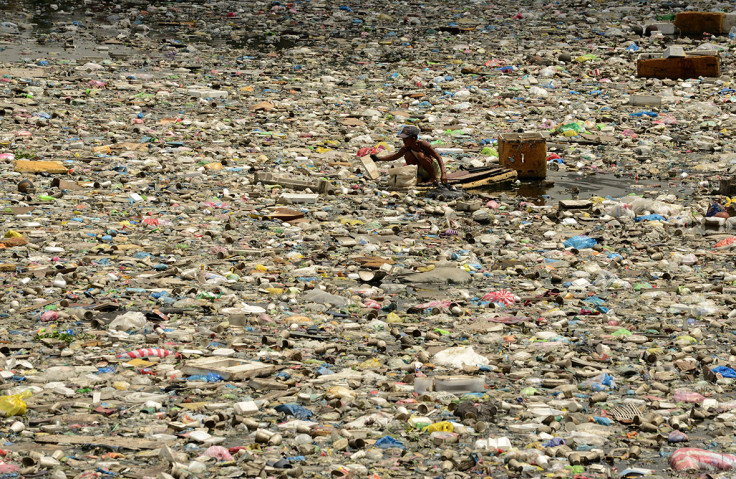
A man wades through rubbish floating on the Estero de Vitas estuary in Tondo, Manila, the Philippines.
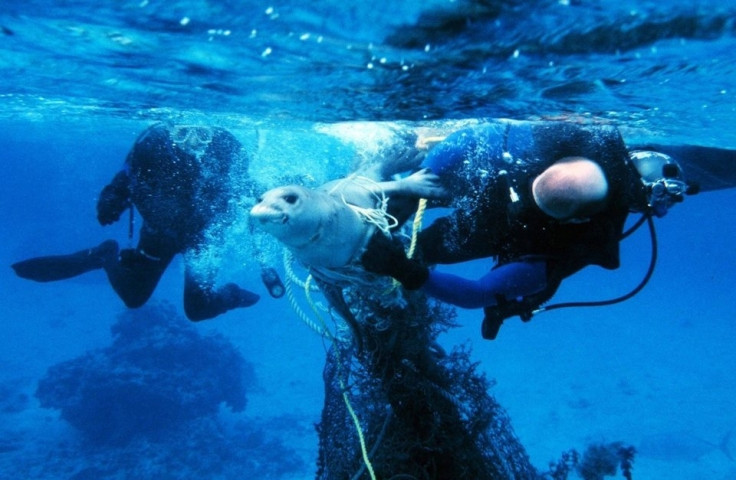
Plastic nets and fishing lines can be especially harmful to animals. Entanglement can lead to the animal strangling itself, or it may be prevented from eating or coming up to the surface for air.
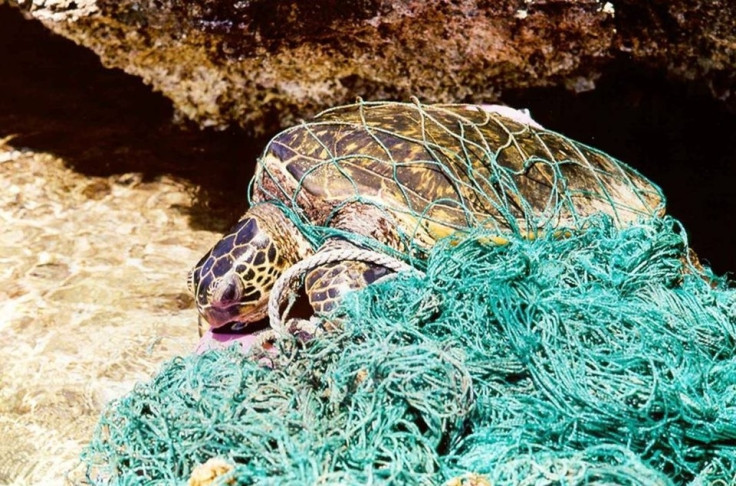
80% of entanglement cases result in direct harm or death, according to research from the University of Plymouth, which also highlighted the impact this can have on endangered species, such as the Hawaiian monk seal and the loggerhead turtle.

Scientists from the University of Tasmania estimate there around 37.7 million pieces of plastic debris on this remote British-controlled island in the South Pacific, making it perhaps the worst place for plastic pollution in the world. Uninhabited Henderson Island was made a World Heritage Site in 1988 due to its pristine coral atolls. Now, the researchers estimate that there are 671 pieces of plastic for every square metre of beach, the highest density of plastic waste ever recorded. Henderson lies at the edge of the large South Pacific Gyre, which captures and spreads man-made debris.
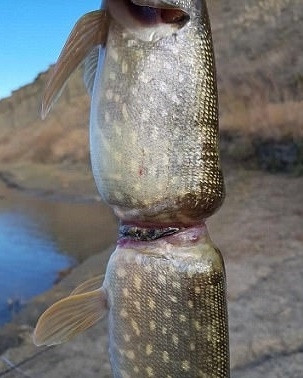
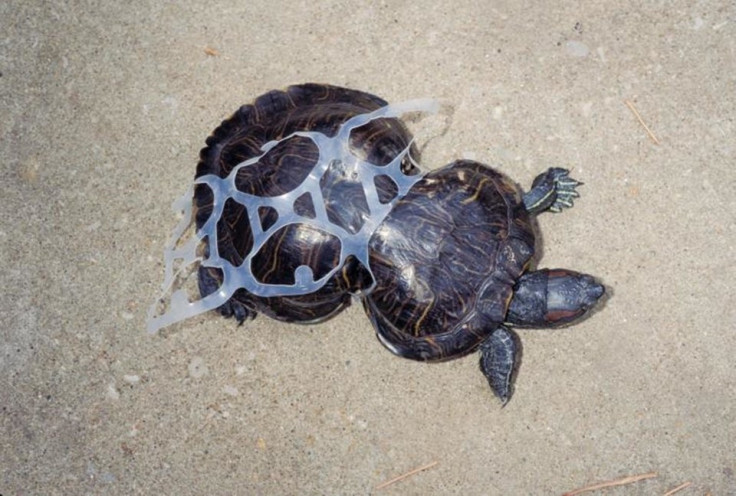
These animals became entangled in plastic six-pack rings, causing their bodies to deform as they grew around the rubbish.
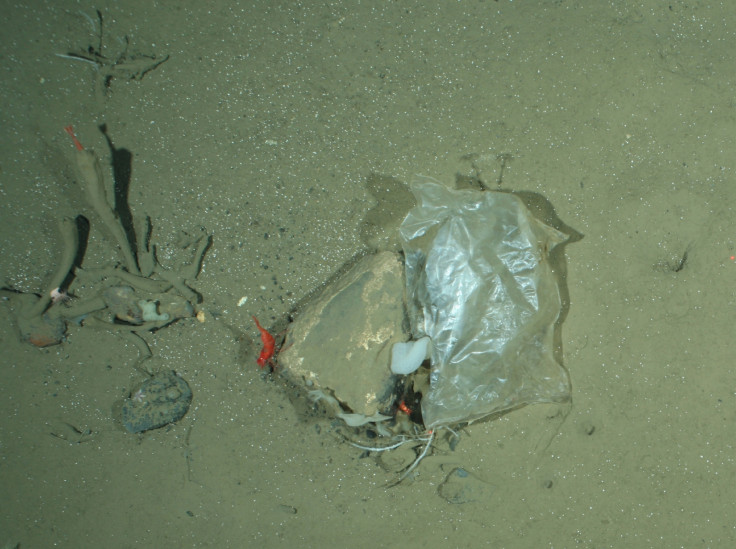
Plastic rubbish is even turning up as far north as the Arctic. This plastic bag was photographed on the sea floor in the Fram Strait - the passage between Greenland and the Norwegian archipelago Svalbard - at a depth of 2,500 metres.
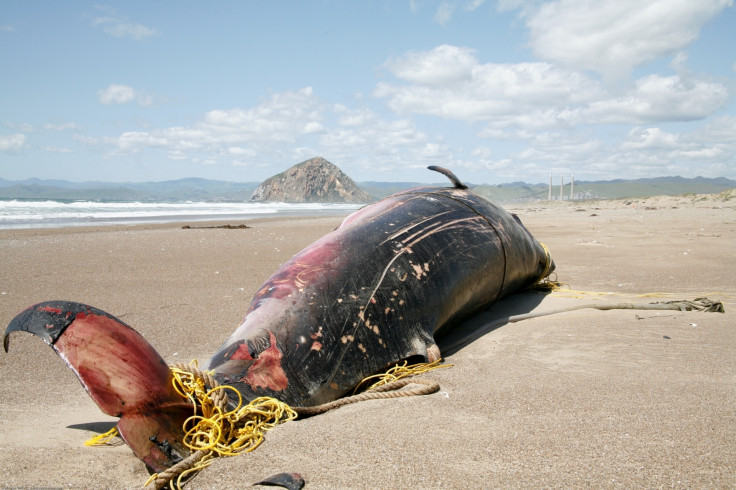
More from IBTimes UK





















